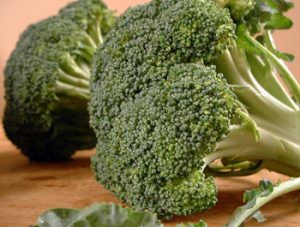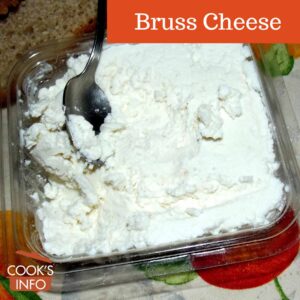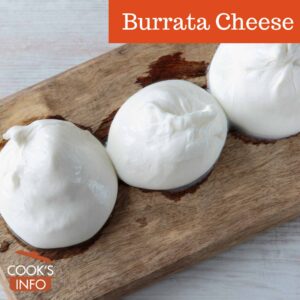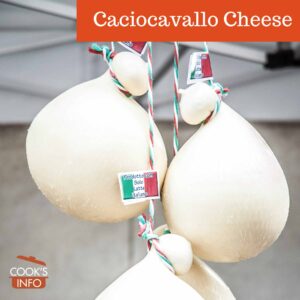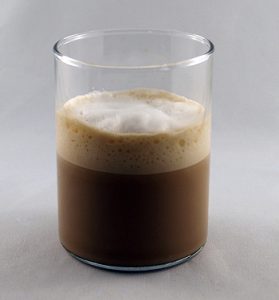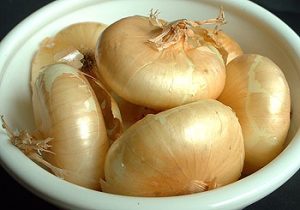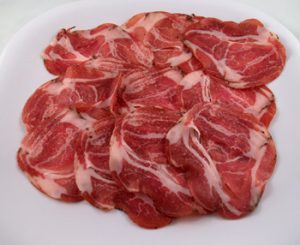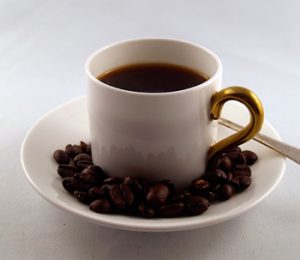Bresaola is lean, air-dried, salt-cured beef rubbed with spices. It is served in Italy as an antipasto sliced very thinly, so thin you can almost see through it (1 – 1.5 mm.) Bresaola is very moist, not leathery. It used to be much drier than it is now, but production techniques have changed to create…
Italian Food
Broccoli
Broccoli © Denzil Green Broccoli is a member of the brassica clan, and so is related to cabbage, cauliflower, Brussels sprouts, etc. What we know today as Broccoli — the kind that is standard in North American and UK supermarkets — is the Calabrese variety developed in Italy. There are actually other types of Broccoli…
Bruss Cheese
Bruss cheese is a fermented cheese spread made. Many people dislike it because it has a strong, putrid smell — and its sharp taste tastes just like it smells.
Bull’s Horn Sweet Pepper
A Bull’s Horn Sweet Pepper is a narrow pepper slightly curved towards its end so that it tapers to a very fine point like a horn. The pepper can be 6 to 10 inches (15 to 25 cm) long, and 2 inches (5 cm) wide at its widest point, with thick walls. The peppers are…
Burrata Cheese
Burrata cheese is a ball of fresh cheese, ricotta-like in texture, made of unspun mozzarella curds. It has a very short shelf life and is flown into the United States from Italy the day after it is made.
Burrini Cheese
Burrini is a firm, pear-shaped, mild Provolone cheese with butter in the middle. You slice it so that you get butter and cheese in a slice.
Caciocavallo Cheese
Caciocavallo cheese is a version of mozzarella cheese. It can be used fresh or aged. It is often shaped like a gourd, and hung to cure.
Campari
Campari is a red apéritif that is mildly bitter, with a hint of sweetness. It is made from herbs, peel from bitter oranges, roots, spices, sugar — 86 ingredients in all, steeped in alcohol, then distilled into a concentrate, then mixed with pure alcohol. The red colouring comes from Cochineal Extract. The formula is kept…
Capons
Capons are roosters that are castrated when they are very young, around 3 weeks old. The EU definition is: “male fowl castrated surgically before reaching sexual maturity and slaughtered at a minimum age of 140 days; after castration the capons must be fattened for at least 77 days.” After castration, the rooster’s comb doesn’t grow…
Cappuccino
Cappuccino, side view© Denzil Green Cappuccino is an Italian milky coffee drink, made from espresso coffee and hot milk, topped with a generous amount of foamed milk with very fine bubbles in it. It often has a small amount of sugar added to it by the drinker. The classic proportions are usually 25 ml (.8…
Cauliflower Mushrooms
Most people would think of a Cauliflower Mushroom as a fungus rather than a mushroom, because it doesn’t look like a mushroom. It looks like a bunch of ruffles or vaguely like a head of cauliflower. It grows at the base of dead trees. The size varies, but the average weight is two pounds (about…
Cavatelli
Cavatelli are short, narrow pasta shells with crinkle-edges that curve inwards a bit. It is made in the parts of Italy known as Apulia, Basilicata, and Calabria. Its shape captures and holds sauces well. It is often served with rocket and tomato sauce in Apulia. Cooking Tips Cook dried Cavatelli 8 to 10 minutes, fresh…
Cavolo Nero Cabbage
Cavolo Nero has a thick leaf somewhat like Savoy Cabbage, but it has sword-shaped leaves that range from very dark green to almost black. Though a member of the broader cabbage family, it is, like kale, from the part of the cabbage family which produces loose leaves instead of a round, compact head. Some people…
Cioppio
Cioppio (aka Cioppino) is a rich, chunky fish stew made around San Francisco, particularly in the North Beach area. The main ingredients are some kind of white fish with firm flesh, and a great deal of seafood, which makes it expensive to make away from coastal markets. The base is tomatoes. The stock can be…
Cipollini Onions
Cipollini Onions © Denzil Green Cipollini are small onions, about the size of ping pong balls, that grow flat at their tops and bottoms. They are 1 to 2 inches (3 to 5 cm) wide and about 1 inch thick (2.5 cm.) There are yellow and red skinned ones. They have a very mild, sweet…
Colonna Oils
Colonna Oils are produced by the Colonna sisters Marina and Vittoria on their family’s estate in the province of Campobasso in the region of Molise, Italy. The oils they make are flavoured with citrus fruit. They grow their own olives on a 360 hectare farm, 70 hectares of which are given over to growing olives….
Coppa
Coppa © Denzil Green Coppa is a medium pinkish-red coloured cold cut that looks somewhat like a prosciutto, and that you serve raw, as you would prosciutto. It is made in both Lombardy and in Emilia-Romagna, and in Corsica as well. There are at least two types of Coppa. One made using the neck of…
Crostate
A crostate is an Italian tart, or pie. It is usually not very tall, though occasionally deep dish ones are made. It is meant to stand on its own, outside a pie pan, when baked. The shell is made of pasta frolla (occasionally pasta sfoglia can be used for a crust) and is either free-formed…
Cubanelle Sweet Pepper
Cubanelle Sweet Peppers are very similar to banana peppers. Often yellow Cubanelle Peppers are called mistakenly banana peppers, though Cubanelles are generally stubbier than banana peppers and have thinner walls. Cubanelles can be 4 to 6 inches (10 to 15 cm) long, tapering towards the end, and up to 2 ½ inches (6 cm) wide…
Cucina Casalinga
Cucina Casalinga is Italian for “home cooking.” “Cucina”, which means “cooking” (or “kitchen”, but not in this context) is feminine, so casalinga ends with an “a.” If joined with a masculine word, it ends with a “o.” Casalingo Casalingo is a word that means “home” in a descriptive sense, as in “homey” or “homely”, depending…
Denominazione di Origine Controllata
Denominazione di Origine Controllata is the Italian equivalent of the French “Appelation of Controlled Origin” system. It was begun in 1963, and rejigged in 1992 to conform with the European Union’s “Protected Designation of Origin” (PDO) programme, which came into effect in 1993. DOC is now the Italian equivalent of an EU PDO. DOC certified…
Espresso
Espresso is a strong, somewhat bitter version of brewed coffee made from dark-roasted coffee beans. Visually, it is noted for being served in small 2 oz (60 ml) cups, and for the thin patches of caramel-coloured “foam” on top, referred to as the “crema” (“cream”) or “sciuma” (that’s right, “scum.”) Making it requires a special…
Falerno
Falerno is a wine being made today in Italy, in the Falerna region of the province of Catanzaro in Calabria. It is sometimes referred to as “Falernum” for marketing purposes to emphasize Falerno’s “ties” with the Romans. The Falerno wines made today can be white or red. Both have a strong fruity flavour. The belief…
Farina per Treccia
Farina per treccia is a strong white flour used to make braided bread with. It is actually labelled “Farina per treccia” in Italian grocery stores.


